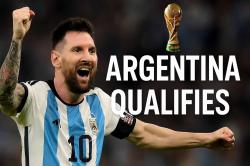Matthew Injury A Major Blow to the Florida Panthers and Their Playoff Chase

Introduction
If you’re a Florida Panthers fan, you've heard that one of the team’s best players, Matthew Tkachuk, is out due to injury. Oct. 10: Tkachuk's groin injury occurred while playing for Team USA in the 4 Nations Face-Off. He won't return until late in the regular season, which is unfortunate. However, there's hope he'll be back for the playoffs. This article will explain what happened, how it affects the team, and what it means for their playoff chances.
The Injury Incident
Where and How It Happened
Matthew Tkachuk was playing in the 4 Nations Face-Off when he suffered a groin injury. This tournament is a big deal, with national teams competing against each other. Unfortunately, an injury occurred to Tkachuk during the game. Groin injuries are tricky, and this one is serious enough that he won’t be able to return to the regular season. You can read more about the news, update and the event that led to his injury on New York Post.
Immediate Impact on Tkachuk
Tkachuk was immediately assessed by the medical staff when the injury occurred. Groin injuries can take a while to heal, and caution is the better part of valor. Known as a bruiser, Tkachuk nonetheless needed some time to get his bearings.
Long-Term Injury Reserve Status
What Is the Long-Term Injured Reserve?
For Tkachuk, the placement on long-term injured reserve (LTIR) means he won’t play for a while. While he is away, the Panthers won't have to include his salary in the team's salary cap. This gives them extra financial flexibility. This is important. It allows the Panthers to adjust their roster while he is out.
What Does This Mean for the Panthers’ Rotation?
For the Panthers, losing Tkachuk for the rest of the regular season is a massive blow. He’s one of their star players who scores, who assists, and who brings an enormous presence on the ice. (The team will need others to fill his shoes without him.)
Playoff Hopes and Recovery Timeline
How Will Tkachuk Recover?
Groin injuries can take several weeks to heal — and even longer if serious. Tkachuk is getting top-notch medical care. With good rehab, he should be ready for the playoffs. The team is going easy on him, but everyone is hoping he’ll be ready when the stakes are the highest.
Will Tkachuk be OK in time for the playoffs?
The regular season will end without Tkachuk, but the Panthers still have hope. They’re hopeful he will return in time for the playoffs. If so, that’s a huge boost for the Panthers as they aim to go deep.
The Bigger Picture: Tkachuk’s Role in the Panthers’ Success
Why Tkachuk Is So Important to the Panthers
Tkachuk is much more than a good player. He’s been a key part of the Panthers’ success this season. He brings leadership, physicality, and, of course, scoring ability. Losing him for the rest of the regular season will create a big gap. But the Panthers hope their depth can help fill it.
Can the Panthers Handle It?
Even as they will be without Tkachuk, the Panthers have a deep team with many gifted players. Other players will need to step up and take on a larger role. That's a good chance for the team to prove that they can still compete without one of their star players. You can follow all the action and stay updated on the Panthers’ progress by checking NHL Streams on SPORTSURGE.
FAQs
Q1: How long will Tkachuk be out for?
Tkachuk will miss the rest of the regular season because of his groin injury. But, there is hope he’ll be back for the playoffs.
Q2: What does long-term injured reserve (LTIR) mean for the Panthers?
Being placed on LTIR means that Tkachuk’s salary doesn’t count against the Panthers’ salary cap. This gives the team more flexibility to make roster moves while he is out.
Q3: How will Tkachuk’s injury affect the Panthers’ playoff chances?
While it’s a big loss for the Panthers, the team is hopeful that Tkachuk will be back for the playoffs. His recovery will be key, but the team has the talent to stay competitive in his absence.
Q4: Will Tkachuk be ready for the playoffs?
The Panthers are optimistic that Tkachuk will recover in time for the playoffs. Groin injuries can take time, but they’re confident he’ll be ready when the postseason begins.
Q5: How does Tkachuk’s injury affect the Panthers' lineup?
Tkachuk’s absence creates a gap in the Panthers’ forwards. Other players must step up to help the team. It’s a challenge, but the Panthers have the depth to handle it.
Conclusion
Matthew Tkachuk’s injury is tough for the Florida Panthers. The team focuses on getting through the regular season. They want to make the playoffs, even without their star player. It’s a significant challenge, but the Panthers have a good lineup and a strong team ethos. Tkachuk's recovery is key for the team's playoff hopes. If he returns in time, it could be what the Panthers need for a deep playoff run.































